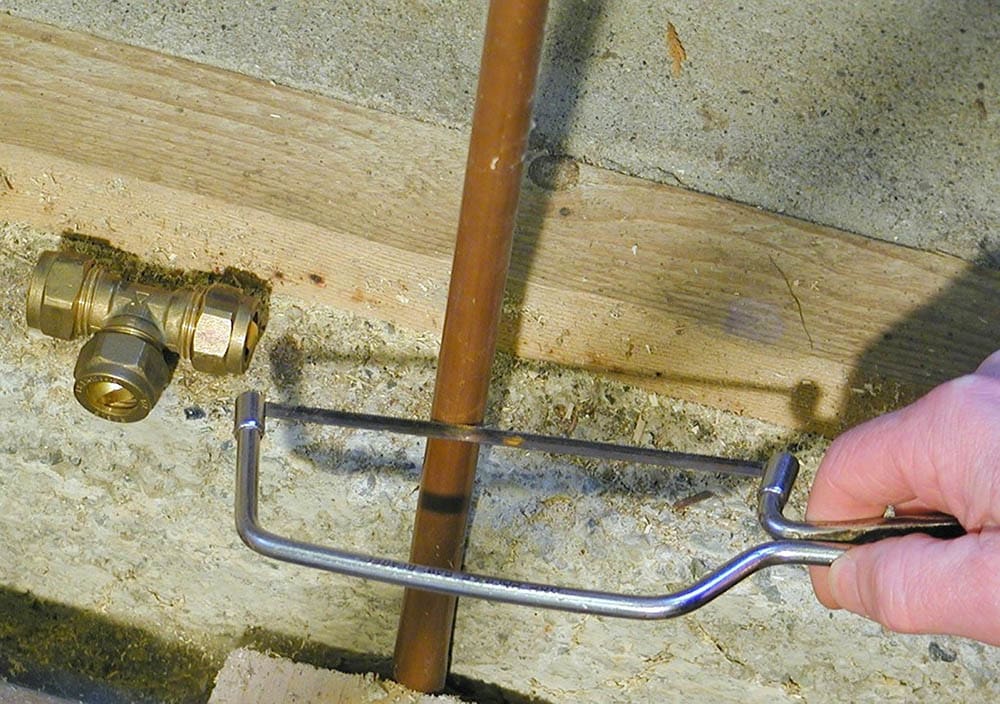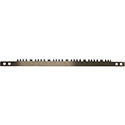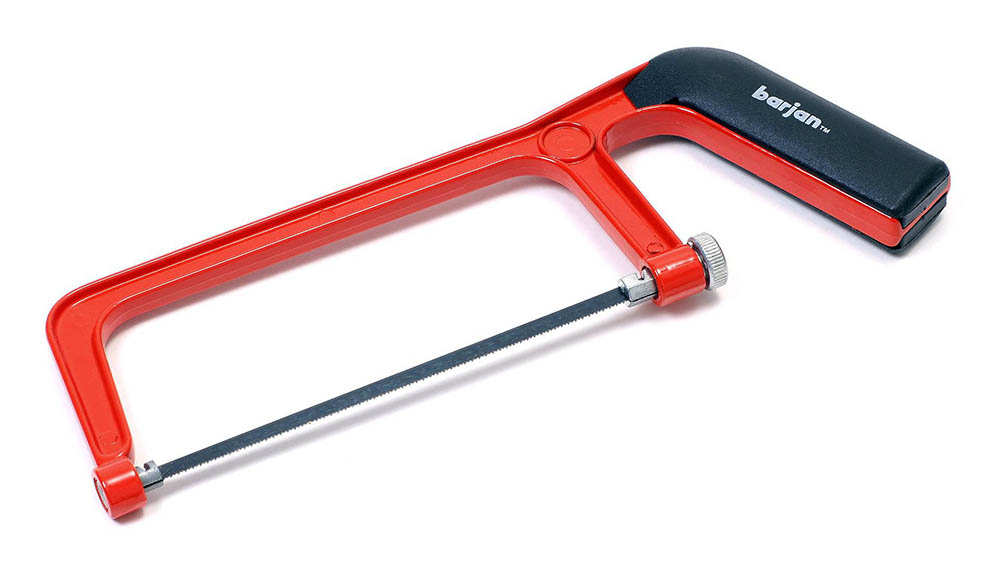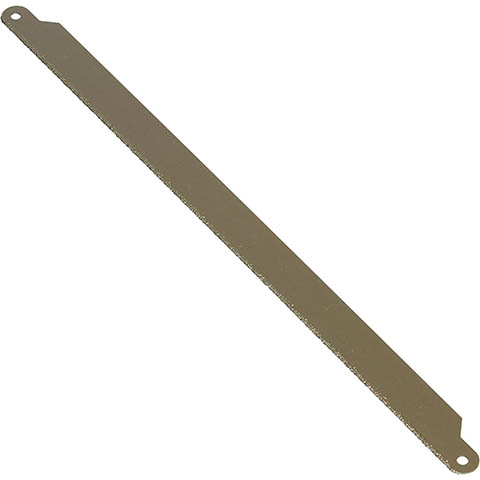3 Best Hacksaw Blades in 2025: Reviews & Top Picks
-
Shea Cummings
- Last updated:

Hacksaws are a staple in most DIY kits; they come in handy for many different tasks. But when it comes time to get new blades, it can be a bit overwhelming when you see the host of brands and options available.
We’ve narrowed down the three top picks for you, and written reviews on each of them. We’ll also discuss why there are only three options when a quick search may reveal many more options than that. Finally, we’ll close with a short buying guide to help you get the right blade (or blades) to have on hand for your hacksaw.
A Glance at Our Winners in 2025
| Rating | Image | Product | Details | |
|---|---|---|---|---|
Best Overall

|

|
32 TPI Hacksaw Blade |
|
CHECK PRICE |
Best Value

|

|
5 TPI Hacksaw Blade |
|
CHECK PRICE |
Premium Choice

|

|
Carbide Grit Hacksaw Blade |
|
CHECK PRICE |
The 3 Best Hacksaw Blades
1. 32 TPI Hacksaw Blade – Best Overall
| Brand: | Hautmec |
| Saw size: | 12-inch (in) |
| Recommended material: | Metal, plastic |
| Pack size: | 10 |
Regarding hacksaw blades, 32 teeth per inch (TPI) is a great number of teeth for good all-purpose cutting. With the quality of these blades, you won’t run out quickly because they come in a pack of 10, which is a great buy for the money you pay.
These blades are bi-metal construction, which essentially allows them to bend without shattering. And the way the teeth are set gives the blade superior cutting performance. One major pitfall with these particular blades is that they won’t cut wood.
When it comes to wood, the TPI is far too high, so the teeth are much smaller and closer together. They will clog up quickly. In addition, they may struggle to cut some plastic without constant cleaning of the teeth.
- Shatter-resistant blades
- Includes case for blade storage
- Maximum cutting performance with the tooth design
- 32 TPI for great all-purpose use
- Won’t cut wood
2. 5 TPI Hacksaw Blade – Best Value
| Brand: | Task |
| Saw size: | 12 in |
| Recommended material: | Wood |
| Pack size: | One |
Cutting wood is not the first job that is typically associated with a hacksaw. However, it’s absolutely possible. This blade from Task has 5 TPI, resulting in large, spaced-out teeth. The tooth design enables cutting wood without clogs causing too much trouble.
You would probably never use a hacksaw as your primary cutting tool for wood. But it makes a great backup when you just need a quick cut. You could also use this blade in a 12-inch bow saw if you wanted a multi-use blade.
Remember that it will not produce a fine-finished cut acceptable for most woodworking projects. Also, you won’t be able to cut any metal with this blade.
- Great choice for cutting wood
- Cuts green or dry wood
- Hardened and tempered steel for lasting sharpness
- Fits most 12-inch hacksaws and bow saws
- Won’t cut metal
- Doesn’t produce a fine finish
3. Carbide Grit Hacksaw Blade – Premium Choice
| Brand: | Stanley |
| Saw size: | 12 in |
| Recommended material: | Ceramic, masonry, cast iron, and hardened steel |
| Pack size: | One |
Another option that may be suitable for you are these carbide grit blades. Instead of traditional teeth, they have tungsten carbide particles that do the cutting. The nice thing about these blades is that they effectively cut several different materials. This is an excellent benefit if you want one blade to do it all.
However, they will not cut wood at all. And depending on the material you’re attempting to cut, they may not cut as quickly as a traditional steel-toothed blade. The other downside is that they are pretty expensive when you consider getting one blade for the price compared to the pack in our top pick.
- Two-way cutting
- Cuts several different materials effectively
- Tungsten carbide particles are long-lasting
- Won’t cut wood
- Expensive
 Why Only Three Choices?
Why Only Three Choices?
You’re likely wondering why there are only three choices to choose from. We decided to do this to provide you with actual value rather than simply repeating the same review over and over for each product.
Take the top pick, for example. You could purchase that same type of blade in three to five different lengths with five to ten TPI configurations, and several manufacturers will carry almost identical blades.
We’ve given you the three best choices among the most common options, then you can read through this buying guide and decide on the right blade for your needs.
Buyer’s Guide: Selecting the Best Hacksaw Blade
There are several variations to the blades mentioned above that can get confusing. If none of the blades are what you think you need, check out this short buying guide for some clarification.
Material
Figuring out what material you have to cut will be the ultimate factor in determining which blade you buy. Because it’s easy to switch blades on most hacksaws, you’ll likely want to have several variations kicking around.
For example, suppose you mostly cut lighter aluminum but sometimes need to cut heavier steel. In that case, you could go with a blade that cuts both, but it’ll be a much rougher cut on the aluminum. Or say you want to be able to cut wood as well; you’ll definitely need more than one blade.
Teeth Per Inch

Outside of different lengths, most hacksaw blades look almost identical. Upon closer inspection, you’ll notice they have different TPI ratings. Simply put, the lower the TPI, the bigger and more spaced out the teeth are—the opposite for a higher TPI.
Here are some common TPI variations and their ideal applications:
- 5–8 TPI: Wood
- 10–18 TPI: Heavy-duty cutting like reinforced steel rod or pipe
- 24 TPI: Medium-duty cutting like electrical conduit or multiple conductor cables
- 32 TPI: Light cutting like thin aluminum
In addition to cutting different materials better, the various TPI variations will also cut differently. The higher the TPI, the more fine-finished the cut will be.
Types of Blade
Another factor in choosing a blade is the type of teeth it has or how they are set. Similar to the TPI configurations, this will contribute to how well it cuts certain materials.
These are the common blades you’ll find:
- Regular blade: The teeth will be straight and designed to cut one way—usually on the backstroke or when you pull the saw towards yourself. This would be the all-purpose blade in the hacksaw universe.
- Raker blade: These are similar to the regular blade, except the teeth are usually in groups of three. This makes cutting heavier materials easier because the teeth clean out better.
- Wavy blade: On a wavy blade, you’ll notice the teeth are slightly bent back and forth. This creates a much smoother cut on soft metals. However, it will not cut heavy metal very well.
- Particle blade: These blades will usually cut various materials like ceramic, metal, or plastic. And they do so without teeth. One of our picks above is a tungsten carbide particle blade.
Conclusion
Except for considering a few different aspects of different hacksaw blades, the purchasing process doesn’t have to be complicated. If you want a blade that does it all, the Stanley Carbide Grit Hacksaw Blade is a great choice, capable of cutting various materials with ease. However, our top choice overall, the 32 TPI Hacksaw Blade from Hautmec, is great value, coming in a pack of 10 blades for a great price.
We hope that these reviews and the buying guide have given you all the information you need to ensure you have the right hacksaw blades in your tool bag.
Featured Image Credit: Eugene Brennan, Pixabay
Contents




 Why Only Three Choices?
Why Only Three Choices?